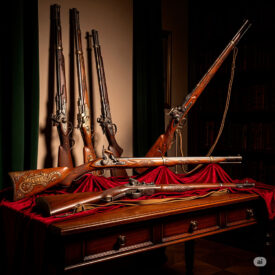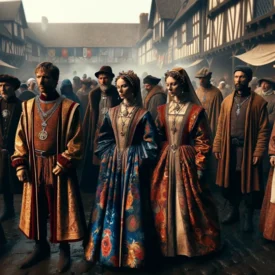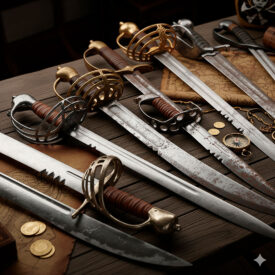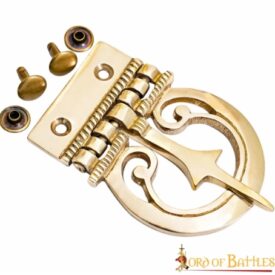The hand-and-a-half sword, also known as the bastard sword, is one of the most versatile and emblematic bladed weapons of medieval Europe. Designed to be used either one-handed or two-handed, it combines the agility of a one-handed sword with the power and reach of a long sword. Below you will find a practical, historical and buyer-oriented guide that unpacks its characteristics, differences with other sword types, handling techniques and recommendations according to your profile.
Definition and terminology: hand-and-a-half sword, bastard sword or long sword?
Terminology and nuances: The terms hand-and-a-half sword, bastard sword and long sword are often used interchangeably in many texts, which can cause some confusion. In practical terms they describe weapons with a grip longer than that of a one-handed sword, allowing a one- or two-handed hold. The epithet “bastard” refers to its hybrid nature: neither exactly a short sword nor a two-handed greatsword, but something intermediate with great adaptability.
Origin and historical evolution
The hand-and-a-half sword appeared in Western Europe at the end of the 13th century and reached its greatest diffusion between the 14th and 15th centuries. It was adopted by knights and pikemen for its ability to be used in a variety of scenarios: mounted, on foot, in duels or in formation battles. With the arrival of firearms in the 16th–17th centuries its use on the battlefield declined, although its technique and teaching survived in historical fencing schools (HEMA).
Technical characteristics: dimensions, weight and design
Although variations exist depending on the workshop and period, the most common specifications of a hand-and-a-half sword are:
- Blade: double-edged, generally between 85 and 105 cm.
- Total length: between 108 and 135 cm.
- Weight: surprisingly light for its size: between 1,300 and 2,000 g.
- Grip: extended to allow one- or two-handed holding.
- Guard: robust and designed for protection and control.
How it was used: basic techniques and tactical advantages
The greatest virtue of the bastard sword is its adaptability. It allows wide cuts and precise thrusts. Among its notable roles are:
- Breaking formations: its length and mass allow blows that disrupt spears and pikes.
- Versatility in grip: you can switch from one hand to two hands to gain power or control.
- Mounted and foot use: sufficiently manageable for cavalry and effective in foot combat.
Practical comparison: one-handed sword vs hand-and-a-half vs great sword
To clarify key differences between sword families, the following table summarizes their use, length, weight and purpose in battle.
| Characteristic | One-handed sword | Hand-and-a-half / bastard sword | Great sword / Zweihänder |
|---|---|---|---|
| Main use | One hand, accompaniment, use with shield | Versatile: one or two hands; duels and formations | Two hands; breaking formations and space control |
| Typical total length | ~90-110 cm | 108-135 cm | 150-200+ cm |
| Average weight | ~1.0-1.5 kg | 1.3-2.0 kg | 2.5-5+ kg |
| Grip | Short | Extended (1 or 2 hands) | Long (always 2 hands) |
Advantages and disadvantages of hand-and-a-half swords
Advantages
- Versatility: quick change between one- and two-handed grip depending on the situation.
- Balance: design intended to combine speed and strength.
- Tactical adaptability: effective against infantry and in mounted combat.
Disadvantages
- Not optimal for a single specialized use: against very light or very heavy weapons it loses some specific advantages.
- Learning curve: requires technique to exploit the mixed grip and handling of the balance point.
Ideal use scenarios
Choosing a hand-and-a-half sword is particularly appropriate in the following scenarios:
- Historical practice and HEMA: for its fidelity to medieval techniques and its use in classical manuals.
- Reenactment and theatre: for its aesthetics and balanced handling.
- Historical military training: it helps develop strength, precision and control.
Techniques and training: fundamentals to practice
Historical schools taught stances, footwork and attacks that are still practiced today in HEMA. Among the fundamentals to work on are:
- Posture and footwork (short and long steps depending on the strike).
- Transition from one hand to two hands without losing the defensive line.
- Cutting strikes, thrusts and work with the pommel/guard.
How to choose your sword: recommendations by profile
When buying a hand-and-a-half sword you should consider the intended use (collection, HEMA training, reenactment, stage work) and your level. Here are concrete recommendations:
Beginner
- Look for a Federschwert or a training replica with a rounded tip to practice safely.
- Prefer a weight close to 1.3–1.6 kg and good balance.
Intermediate / HEMA
- Choose a sword with moderate blade flexibility and a solid guard to practice historical techniques and forms.
- Consider additional protection and certified safety equipment.
Advanced / Collector
- For more faithful reenactment or historical combat, look for replicas with historical dimensions (85–105 cm blade) and quality steel.
- If you plan to use it in exhibitions, prioritize aesthetic finishes and authenticity in grip and guard.
Maintenance and safety
Maintaining a sword involves basic care: cleaning the steel, protective oil to prevent rust, checking the grip and storing it in a dry place. In training, always use appropriate protective gear and inspect the weapon before each session.
Practical buying summary
If you are looking for a sword to start in HEMA or reenactment, prioritize safety, balance and a moderate weight. If you are a collector, seek authenticity in materials and historical dimensions. Always ask the seller about the steel, heat treatment and exact measurements.
If you want to deepen your technique, look for local HEMA schools that work with the Federschwert and historical manuals. The treatises of Fiore dei Liberi and the traditions of Johannes Liechtenauer are an excellent starting point to study forms and real applications.
Why choose a hand-and-a-half sword (bastard swords)
Its balance of reach, power and maneuverability makes it an ideal piece for those seeking a single sword capable of covering many uses: reenactment, historical training and collecting. In addition, its rich history and available documentary sources allow a practice well-founded from a technical and historical point of view.
Ready to choose yours? If you are looking for historical models with good value for money, pick a balanced sword with a good center of gravity and robust finishes. For training prioritize safety; for collecting, prioritize authenticity.
















